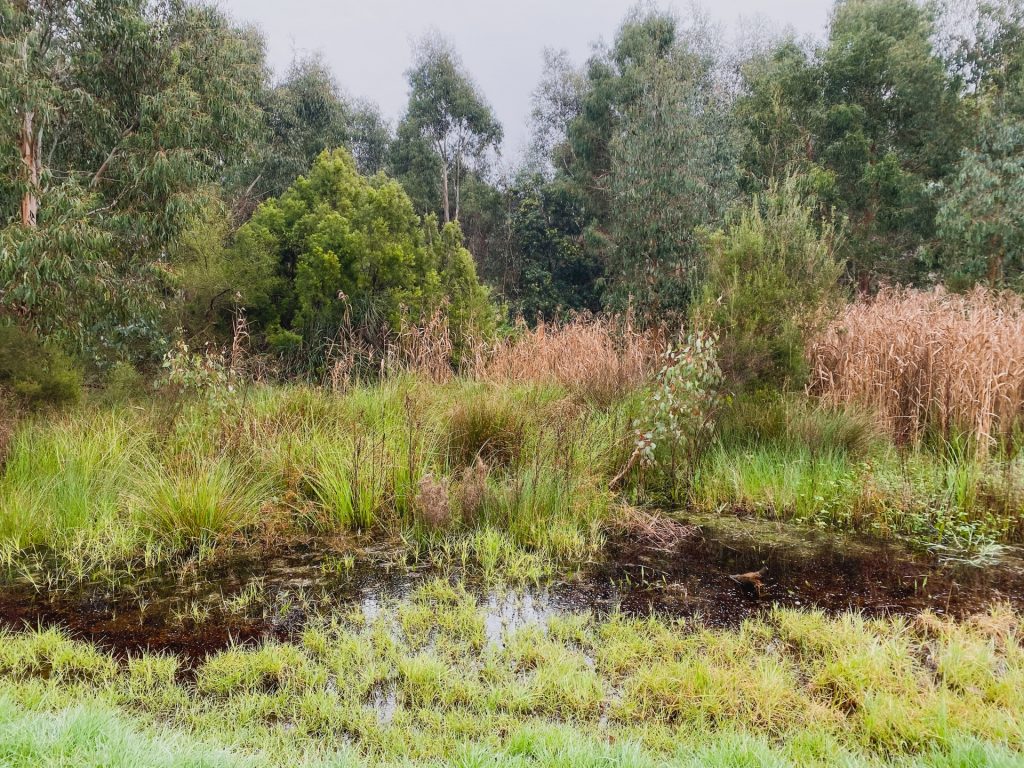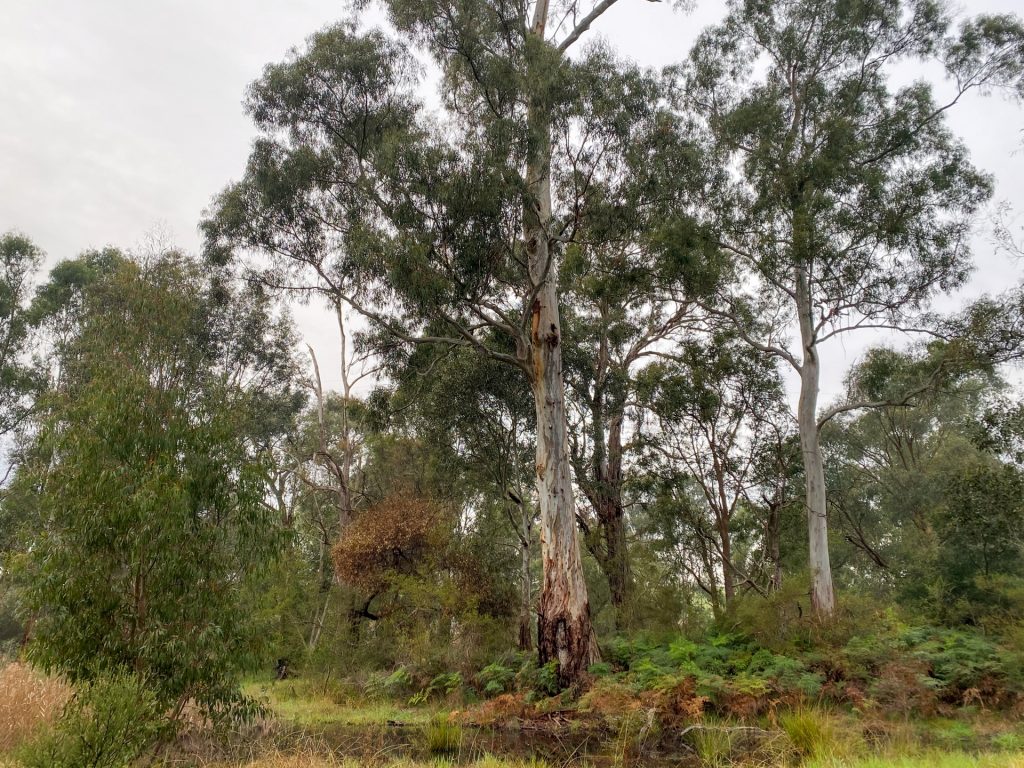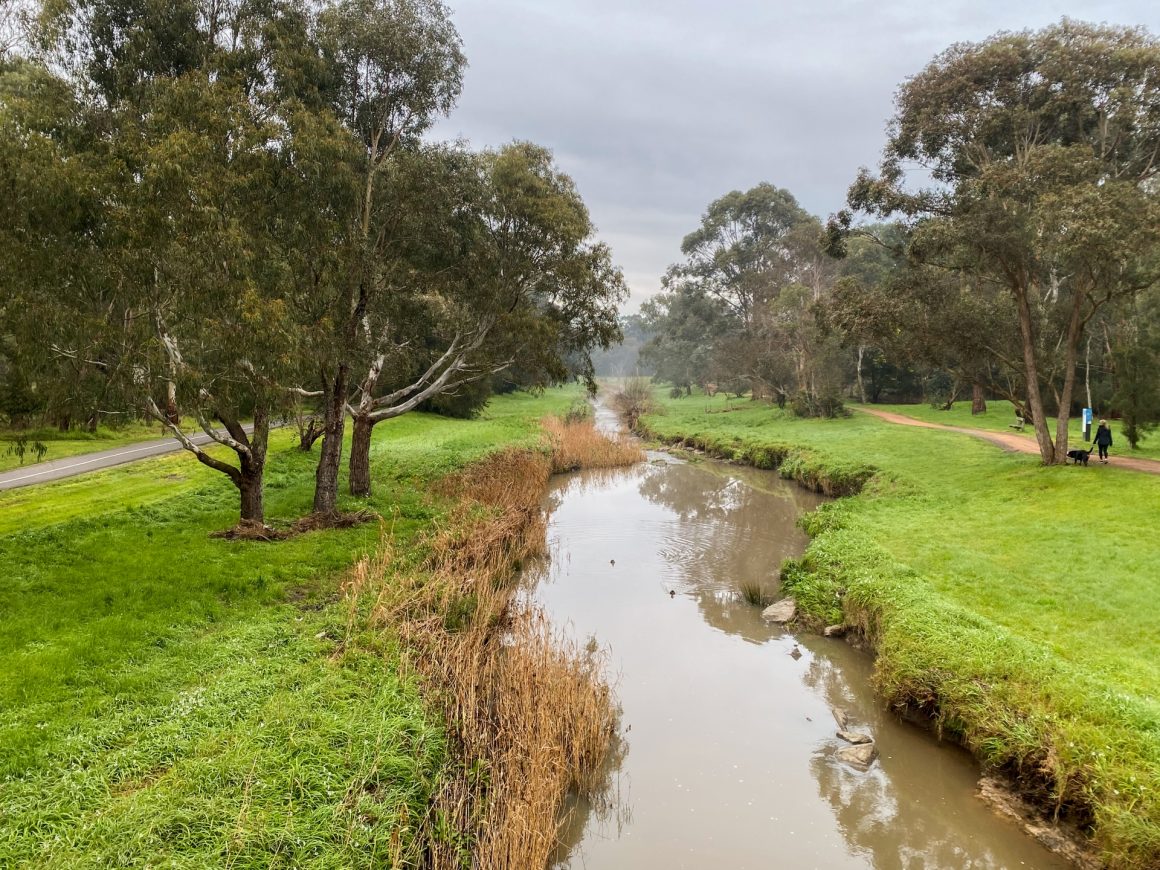As a child, I was enchanted by the Dandenong Creek. My family and I would often take our bikes through the trail along the creek on a sunny weekend morning. I would zoom through the underpass and, as though it were a doorway to a fantasy world, I was transported from suburban Melbourne to scene full of greenery and home to a collection of hidden creatures. My sister and I would speed down the path, the morning air cool on our faces, before dismounting to walk our bikes up to the top of a bridge. We would gaze over the water at the ducks paddling in and out of the riparian vegetation.
This was the place, in the middle of a bustling suburb, where I was first able to witness the wild. Well, as wild as I had ever seen before in Melbourne. This tucked-away gem supported a diversity of life I had never before encountered. It was magical to me.
On the foothills of the Dandenong Ranges, the Dandenong creek begins. It flows for 53 kilometres to where it joins the Patterson River and spills into Port Phillip Bay. From mountain to sea, through Wurundjeri and Boon Wurrung Country, the creek holds significant cultural and ecological importance in Melbourne’s south-east.
Now, as an adult, I have a newfound appreciation for this space. To have this flourishing ecosystem around the corner from home is a luxury I had forgotten.
I returned to the creek for the first time in many years in the midst of the COVID-19 pandemic, craving a dose of nature after isolating at home for so long. It had been far too long since I visited the place that had captured my imagination as a child. As it often does, life had got in the way. But like many, my day-to-day routine had been turned on its head, and I now had nothing but time to revisit my childhood memories.
It was a brisk weekend morning. I quickly stretched in the carpark, turned on my watch’s exercise app, and began to walk. The beginning of the track felt so familiar, although it had been years. I walked along, through the underpass, and the creek came into view.

The lush greenery took me by surprise. I realised that the last time I had walked along the creek, it would have just began recovering from the impacts of the Millennium Drought. Ten years on, the dry vegetation had been replaced by luminous grassy banks that shone in the morning sun.
Hearing the faint gurgle of the flowing creek and a choir of frogs calling from amongst the reeds instantly put me at ease. The stresses that had been weighing down on me for the past few weeks had been put on pause as this sanctuary, teeming with life, unlocked a new energy within me.
The value of this patch of green in suburban Melbourne extends beyond its therapeutic qualities. This habitat link stretches for over 50 kilometres, a corridor that cuts through the matrix of urban development, allowing a continuous connection of livable space for native species.
Before European settlement, the Dandenong Creek and its surrounding wetlands once supported an incredible diversity of life. Many species have been lost from the area, including the endangered freshwater fish, the Dwarf Galaxias. However, many intriguing creatures remain.
For myself, personally, the birdlife continues to be a highlight. I watched with glee as Pacific Black Ducks wove through the murky creek’s vegetation, and a Purple Swamphen perched attentively atop a tangle of reeds. Along the path, ancient eucalyptus trees stretched into the sky, the canopy concealing a gang of Rainbow Lorikeets chatting high above my head, and a particularly cheeky Sulfur-Crested Cockatoo screeching happily to himself as foliage dropped to the ground from where he sat.
Native freshwater species such as the Common Galaxia, Short-Finned Eels and Eastern Snake-Necked Turtles live in the creek itself, concealed under the turbid surface. Most likely sound asleep during my morning trek, Sugar Gliders, Platypuses, Ringtail and Brushtail Possums and the Rakali, Australia’s answer to an otter, also call this ecosystem home. The creek is a sanctuary to a number of at-risk species, such as the near-threatened Blue-Billed Duck, the vulnerable Grey-Headed Flying Fox and the endangered Growling Grass Frog.

Culturally, the site has enormous value. The creek and surrounding environment provided food and water for the Wurundjeri and Boon Wurrung people. The very eucalyptus trees that stand today provided a number of resources for the traditional owners, from food to building materials. The scars remain on those trees today, showing where bark was once removed for manufacturing tools and canoes. These ancient scarred trees allow a glimpse into Indigenous heritage, giving insight into the lives of the traditional owners of the area from many years ago.
Walking along the creek, as many have for thousands of years, one cannot help but feel overwhelmed by the significance of this place, on so many levels: ecologically, culturally and personally. But the history of this corridor extends far beyond my own memories, and with the care that it receives from dedicated locals, I have hope that it will continue to flourish and capture the imagination of many more children for years to come.
Banner image courtesy of Kelley Leech


Leave a Reply